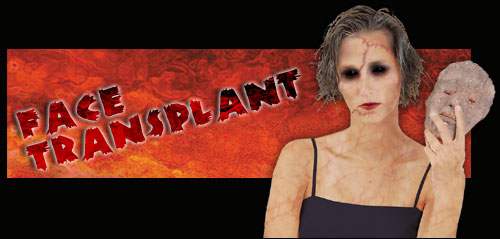

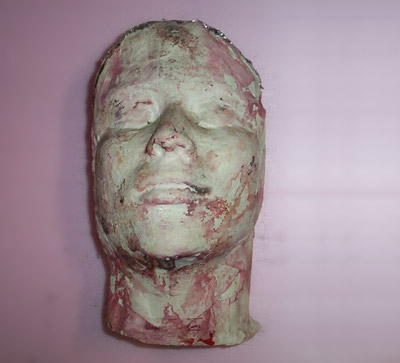
| Step 1:
In order to do this project, you must have a pre-made form. I used a ceramic cast that I have of my friend Courtney, but I suppose a Styrofoam wig-head or even a cheap (but solid) mask would work. The photo above shows the ceramic form that was used for this project. (As you can see, poor Courtney's face has been used and abused through several art projects over the past decade.)
Using aluminum foil, lightly cover the mold. make sure that the foil conforms to all of the cracks and crevices. You may want to use your fingernails or the handle of a spoon to help push the foil into the hard to reach areas.
|

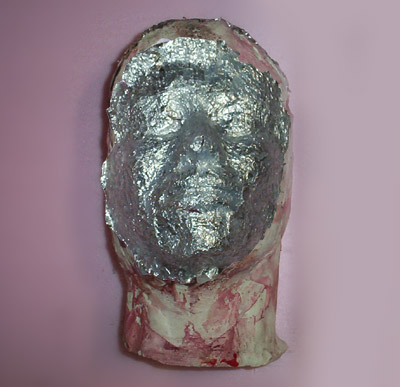
|
Step 2:
Cover the foil with a light coating of hot glue. The key here is to add very small amounts of glue. You can accomplish this by rapidly moving the tip of the gun across the foil's surface. This layer should be so thin that it is barely noticible to the eye. The hot glue only serves as a layer to make the foil more rigid.
|

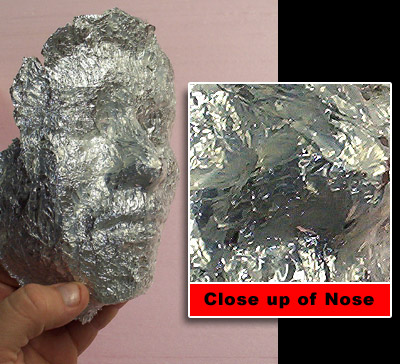
|
Step 3a:
After the glue cools, remove the foil from the mold. The aluminum foil should be semi rigid now because of the light coating of hot glue.
TIP: The inset photo demonstrates how light the glue coating is. Even magnified, it is hard to determine what areas have been glued. The easiest way to tell is to shine a light on the face. The foil will reflect, but the glue will not.
|
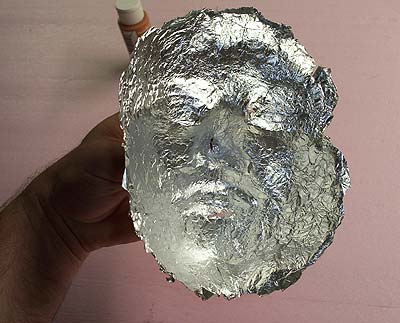
|
Step 3b:
Now that the face has been removed from the mold, cover the insides of the face with a light coat of hot glue also.
|


| Step 4:
Bring out the paint! I used black, white, and four "skin" colored acrylic paints ranging from a brown, to peaches, to a burnt orange. Paint both the front and the back of the foil face. Allow the paint to dry.
|

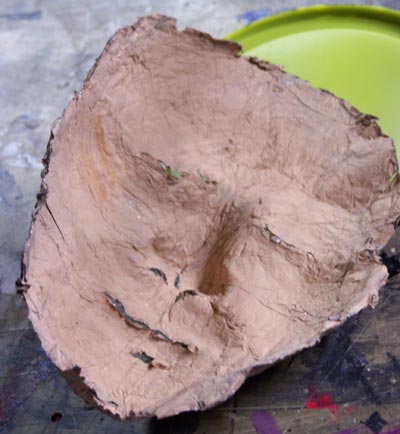
| Step 5:
Paint both the front and the back of the foil face with your base skin tones. Allow the paint to dry. Apply multiple coats until you get the desired tone.
|

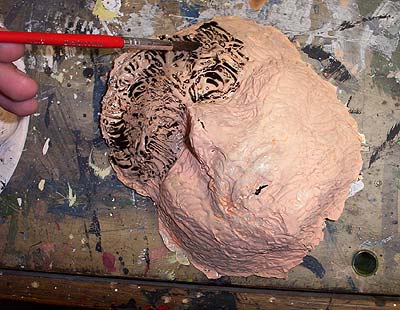
| Step 6:
Make a wash of the black paint mixed with water. Apply it heavilly so that it seeps into all of the cracks and crevaces. Pay attention and cover all of the areas because this step is what makes it so creepy looking.
|

| Step 7:
Using a paper towel, lightly daub any excess paint that is clinging to the surface of the foil face. Allow to dry and repeat Steps 6 and 7 until you are satisfied with the results. Remember to do the inside of the face as well.
|

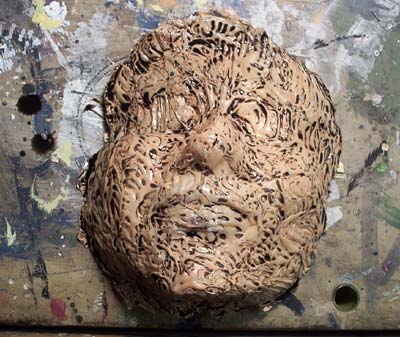
| Step 7 (detail):
The above photo shows the black after it has settled into the ridges and the excess has been daubed away. Allow both sides of the mask to dry.
|

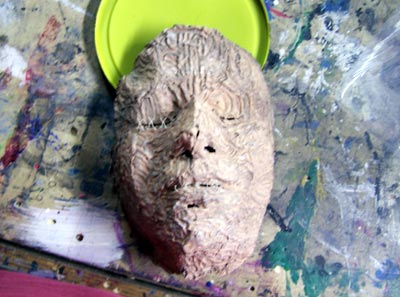
| Step 8:
Using a needle and thread, stitch the eyes and mouth so that they appear to be sewn shut. This step adds a lot of creepiness to the face. I used thread, but in hindsight, it may have been more effective to use yarn that has been covered in glue to make it look like matted thread. Ewww,,,,,,
|

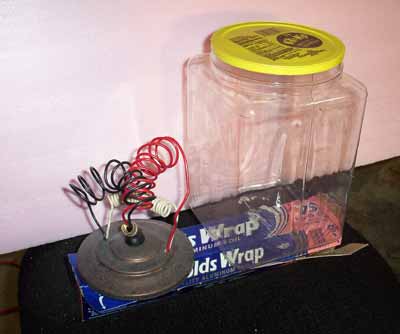
| Step 9 (optional):
This is an optional step where I suspended the face in a plastic jar filled with glowing fluid. Before describing the steps to do this, I want to cover the materials that were used. The "jar" is nothing more than a rectangular Atomic-Fireball candy container from our local Sam's Club store. The top is made from a scavenged part of a old, broken ceiling fan. The wires are just scrap wires that I rolled into loose coils and then stuck into the screw holes of the ceiling fan fixture.
|

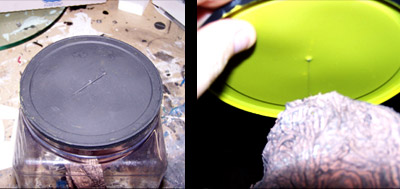
| Step 10 (optional):
In order to make the face appear to be suspended in the jar, I poked a hole in the top of the jar with a nail, then used the nail to hold the string in place by making a "T" (as shown above-left.) The string was then fed through the holeand tied to the face (as shown above-right.) It worked out well because the face continually rotated inside the jar, even in the fluid, giving the viewer a look at both sides of the "mask".
|

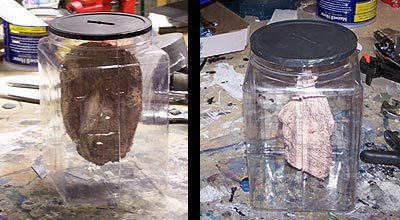
|
Examples of how the suspended mask looks before the glowing fluid is added.
|

What do you think? Contact me and let me know by clicking here.
|

